Sun determined the
seasons of the year and the face of the Full Moon was looked at in order to
find out
where the Sun was not; the nakshatra method. It was a logic of contrast.
In late winter -
north of the equator - Leo would be in full view in the night
and he could therefore not be at the Sun simultaneously.
It had to be winter because from ancient times the Sun had ruled like a ferocious Lion
in
summer.
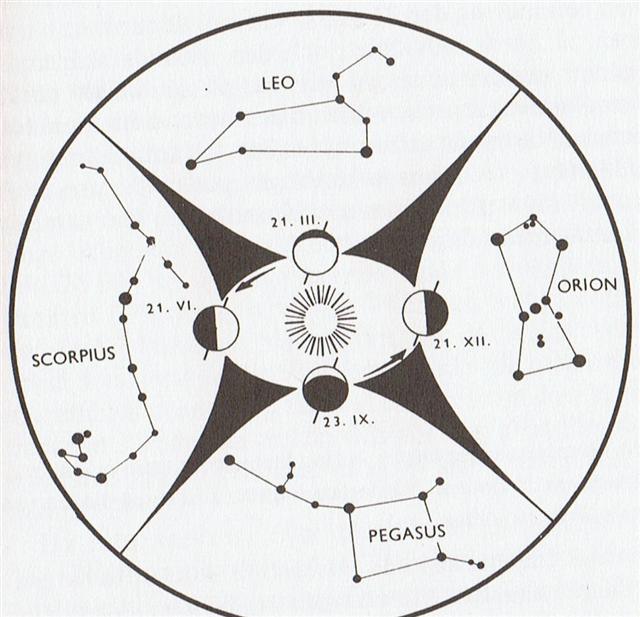
A problem when reading the
rongorongo texts is to determine if the glyphs were intended to depict
what could be seen in the night sky or if the glyphs were
identifying positions of the Sun.
However, on Easter Island the
seasons were 'upside down', and when for instance in late
September the Sun was at Leo (which could not
have been directly observed in the night sky because the Sun was there) it
was late winter on Easter Island. And when Leo was visible at the Full
Moon it meant it was late in summer (in March) - not in September
(late winter). In other words, they could connect
the star figures close to the Full Moon with the seasons of their
Sun. It was as if the Sun had
moved to the Full Moon. It was as if the Sun had 'changed
sex' and become Hotu.
| Hotu
Ta.: hotu, to produce fruit, Sa.:
fotu, id. Mgv.: akahotu, the September
season. Churchill.
H.: Hoku, Night of the full
moon. When this moon set before daylight it was called
Hoku Palemo, Hoku that slips away. When it set
after daylight it was called Hoku Ili, grounded
Hoku. Ka mahina o Hoku, the full moon of the
night Hoku. Cf. hōkū, star. Hō kū,
star. (PPN fetu'u). Wehewehe.
... When
this tremendous task had been accomplished Atea
took a third husband, Fa'a-hotu, Make Fruitful.
Then occurred a curious event. Whether Atea had
wearied of bringing forth
offspring we
are not told, but certain it is that Atea and her
husband Fa'a-hotu exchanged sexes. Then the
[male] eyes of Atea glanced down at those of his
wife Hotu and they begat Ru. It was this
Ru who explored the whole earth and divided it
into north, south, east, and west ... |
|
Manuscript E (p.1) |
|
1 |
ko oto uta |
ariki motongi |
|
2 |
ko tangaroa.a oto uta |
ariki motongi |
|
3 |
ko tiki hati.a tangaroa |
ariki motongi |
|
4 |
ko roroi.a tiki hati |
ariki motongi |
|
5 |
ko tuu kumā.a roroi |
ariki motongi |
|
6 |
ko ataranga.a tuu kumā |
ariki motongi |
|
7 |
ko harai.a ataranga |
ariki motongi |
|
8 |
ko taana.a harai |
ariki motongi |
|
9 |
ko matua.a taana |
ariki motongi |
|
10 |
ko hotu.a matua |
ariki motongi |
|
O maori te ariki nei.
etahi te angahuru. ko maori. te ingoa o te kainga.
ko marae renga te ingoa. o te maara noho o te
ariki.nui.ko ma rae tohia te rua maara noho o te
ariki. |
We can therefore be fairly
certain that the rising kahi huga at the horizon in the
east (in Cb2-15) was meant to tell about the position of the Crow
at Ain in Taurus:
|
November
13 |
14 |
15 |
16 (320
= 80 + 240) |
|
κ Librae
(237.2), ι Serpentis (237.4), ψ² Lupi, ρ Oct.
(237.5), γ Cor. Borealis, η Librae (237.7), COR
SERPENTIS
= α Serpentis (237.9) |
π Cor.
Borealis,
UNUK
ELHAIA (Necks of the Serpents)
= λ Serpentis (238.1),
CHOW
= β Serpentis (238.6) |
κ
Serpentis (239.3), δ Cor. Borealis,
TIĀNRŪ
= μ Serpentis (239.5), χ Lupi, (239.6), ω Serpentis
(239.7),
BA
=
ε Serpentis, χ Herculis (239.8). κ Cor. Borealis, ρ
Serpentis (239.9) |
λ Librae
(240.0), β Tr. Austr. (240.3), κ Tr. Austr. (240.4),
ρ Scorpii (240.8) |
 |
 |
 |
 |
|
Cb2-4 |
Cb2-5 |
Cb2-6
(422 = 414 + 4 + 4) |
Cb2-7
(31) |
| te
ua |
koia ra |
kua
tuku ki to mata - ki tona tukuga |
e
kiore - henua - pa rei |
|
δ Persei (54.7) |
Al Thurayya-27 /
Krittikā-3 |
MENKHIB (Next to the Pleiades) = ζ Persei
(57.6)
PORRIMA (γ
Virginis)
|
|
TAU-ONO
(Six Stones)
ATIKS = ο Persei,
RANA (Frog) = δ Eridani
(55.1), CELAENO (16
Tauri), ELECTRA (17),
TAYGETA (19), ν Persei
(55.3), MAIA (20),
ASTEROPE (21),
MEROPE (23) (55.6) |
Temennu-3 (Foundation
Stone)
Hairy Head-18
(Cockerel)
ALCYONE (56.1),
PLEIONE (28 Tauri),
ATLAS (27) (56.3) |
|
May 14 |
15 (365
+ 135 = 500) |
16 (136
= 80 + 56) |
17 |
|
6 |
November
23 (327) |
24 |
25 |
|
Heart-5
(Fox)
σ
SCORPII
(247.0),
HEJIAN
= γ Herculis (247.2), ψ Ophiuchi (247.7) |
ρ
Ophiuchi (248.1),
KAJAM
(Club)
= ω Herculis (248.3), χ Ophiuchi (248.5),
SHE LOW
(Market Tower)
= υ
Ophiuchi, Tr. Austr. (248.7), ζ Tr. Austr. (248.8) |
Al Kalb-16
/
Jyeshtha-18 /
ANA-MUA-1 (Entrance pillar)
ANTARES
= α Scorpii
(249.1),
MARFIK
(Elbow)
= λ Ophiuchi, φ Ophiuchi (249.5), ω Ophiuchi
(249.8) |
 |
 |
 |
|
Cb2-14 |
Cb2-15 |
Cb2-16
(40) |
| kua
pua to hau |
te
kahi huga |
kiore - henua |
|
HYADUM II = δ¹ Tauri (64.2) |
Net-19 (Crow)
AIN (Eye)
= ε Tauri, θ¹
Tauri, θ² Tauri (65.7) |
no star listed (66) |
|
May 24
(144 = 509 - 365) |
25 |
26 |
By correlating te kahi huga
in Cb2-15 with the Full Moon at the position in the night
sky where Taurus half a year earlier had risen heliacally in the east, it was possible to
deduce the Sun had reached the opposite side of the year,
viz. to the Scorpion - corresponding to the Blue Dragon of
the Chinese.
Their White Tiger was in the night sky when their Blue
Dragon was at the Sun and it was November.

In China, north of the equator, it was late autumn in November,
while at the same time on Easter Island it was in November
and early summer, and therefore the mouth of the tuna
'gentleman' (tagata hoonui) in Cb2-15 could have been
drawn open in order to indicate the position of an observer
in Polynesia south of
the equator.
| Honui
1. Person worthy of respect, person
of authority. 2. Livelihood, heirloom,
capital; ka moe koe ki toou hônui, you must
marry to ensure your livelihood (said to a little
girl); he hônui mo taaku poki, this is the
heirloom for my son. Vanaga.
Great (hoonui); honui,
chief T.; tagata hoonui, personage;
hakahonui, to praise, to commend. Churchill.
|
|
Vaha
Hollow; opening; space between the
fingers (vaha rima); door cracks (vaha
papare). Vahavaha, to fight, to wrangle,
to argue with abusive words. Vanaga.
1. Space, before T; vaha
takitua, perineum. PS Mgv.: vaha, a
space, an open place. Mq.: vaha, separated,
not joined. Ta.: vaha, an opening. Sa.:
vasa, space, interval. To.: vaha,
vahaa, id. Fu.: vasa, vāsaà,
id. Niuē: vahā.
2. Muscle, tendon; vahavaha,
id. Vahahora
(vaha 1 -
hora 2),
spring. Vahatoga
(vaha 1 -
toga 1),
autumn. 3. Ta.: vahavaha,
to disdain, to dislike. Ha.: wahawaha,
to hate, to dislike.
Churchill. |
|
Mea
1. Tonsil, gill (of fish). 2. Red
(probably because it is the colour of gills); light
red, rose; also meamea. 3. To grow or to
exist in abundance in a place or around a place:
ku-mea-á te maîka, bananas grow in abundance (in
this place); ku-mea-á te ka, there is plenty
of fish (in a stretch of the coast or the sea);
ku-mea-á te tai, the tide is low and the sea
completely calm (good for fishing); mau mea,
abundance. Vanaga.
1. Red;
ata mea, the
dawn. Meamea,
red, ruddy, rubricund, scarlet, vermilion, yellow;
ariga meamea,
florid; kahu meamea
purple; moni meamea,
gold; hanuanua
meamea, rainbow;
pua ei meamea,
to make yellow.
Hakameamea, to redden, to make yellow. PS
Ta.: mea,
red. Sa.: memea,
yellowish brown, sere. To.:
memea,
drab. Fu.: mea,
blond, yellowish, red, chestnut. 2. A thing, an
object, elements (mee);
e mea,
circumstance; mea ke,
differently, excepted, save, but;
ra mea, to
belong; mea rakerake,
assault; ko mea,
such a one; a mea
nei, this;
a mea ka,
during; a mea,
then; no te mea,
because, since, seeing that;
na te mea,
since; a mea era,
that; ko mea tera,
however, but.
Hakamea, to prepare, to make ready. P
Pau., Mgv., Mq., Ta.:
mea, a thing. 3. In order that, for.
Mgv.: mea,
because, on account of, seeing that, since. Mq.:
mea, for.
4. An individual;
tagata mea,
tagata mee,
an individual. Mgv.:
mea, an individual, such a one. Mq.,
Ta.: mea,
such a one. 5. Necessary, urgent;
e mea ka,
must needs be, necessary;
e mea,
urgent. 6. Manners, customs. 7. Mgv.:
ako-mea,
a red fish. 8. Ta.:
mea, to do. Mq.:
mea, id.
Sa.: mea,
id. Mao.: mea,
id. Churchill. |

For the beginning of the G text I have
assumed the rising Aldebaran was illustrated as the vaha mea
kind of shark in Ga1-4 in order to
refer to the
ancient time when this great red star was at the northern spring equinox:
|
0h
(80) |
MARCH 22 (*1) |
23 |
24 |
JULIAN EQUINOX |
|
May
24 (*64) |
25 |
26 |
27 |
28
(148) |
|
HYADUM II
= δ¹
Tauri (64.2) |
Net-19 (Crow)
AIN
(Eye)
= ε Tauri, θ¹ Tauri, θ² Tauri (65.7) |
no
star listed (66) |
no
star listed (67) |
Rohini-4 /
Pidnu-sha-Shame-4
(Furrow of Heaven) /
ANA-MURI-2 (Rear pillar - at the foot of
which was the place for tattooing)
ALDEBARAN
= α Tauri
(68.2),
THEEMIN
= υ² Eridani (68.5) |
|
no
glyph |
 |
 |
 |
 |
|
Ga1-1 |
Ga1-2 |
Ga1-3 |
Ga1-4 |
|
Heart-5 (Fox)
σ SCORPII (247.0),
HEJIAN = γ Herculis
(247.2), ψ Ophiuchi (247.7) |
ρ Ophiuchi (248.1),
KAJAM (Club) = ω
Herculis (248.3), χ Ophiuchi (248.5),
SHE LOW (Market Tower)
= υ Ophiuchi, Tr. Austr. (248.7), ζ Tr.
Austr. (248.8) |
Al Kalb-16
/
Jyeshtha-18 /
ANA-MUA-1 (Entrance pillar)
ANTARES = α Scorpii
(249.1), MARFIK (Elbow)
= λ Ophiuchi, φ Ophiuchi (249.5), ω Ophiuchi
(249.8) |
γ Apodis (250.1), σ
Herculis (250.3), θ Tr. Austr. (250.6), τ
Scorpii (250.7) |
HAN = ζ Ophiuchi
(251.0) |
|
SEPTEMBER 20 |
21
(264) |
22 |
23
(*186) |
24 |
|
November 23 (327) |
24 |
25 |
26
(*250) |
27 |
Its open mouth ought to indicate the beginning of
the season of Sun light. Finding
nakshatra Ophiuchus in the night meant the Sun had to be at the
opposite side of the year and this was in Taurus. However, in
Polynesia Aldebaran was
said to be a place noted for tattooing and on Easter Island
this place should therefore have been where the black cloth of night
was arriving, i.e late in autumn.
...
When the man, Ulu,
returned to his wife from his visit to the temple at
Puueo, he said, 'I have heard the voice of the noble
Mo'o, and he has told me that tonight, as soon as
darkness draws over the sea and the fires of the volcano
goddess, Pele, light the clouds over the crater of
Mount Kilauea, the
black cloth will cover my head. And when the breath has gone
from my body and my spirit has departed to the realms of the
dead, you are to bury my head carefully near our spring of
running water. Plant my heart and entrails near the door of
the house. My feet, legs, and arms, hide in the same manner.
Then lie down upon the couch where the two of us have
reposed so often, listen carefully throughout the night, and
do not go forth before the sun has reddened the morning sky.
If, in the silence of the night, you should hear noises as
of falling leaves and flowers, and afterward as of heavy
fruit dropping to the ground, you will know that my prayer
has been granted: the life of our little boy will be saved.'
And having said that, Ulu fell on his face and died
...
If the rising shark in Ga1-4 was representing
Aldebaran - which is one of my very few basic axioms - it follows
that the text should here be read as referring to
circumstances north of the equator - and not to the Blue Dragon
but to the White Tiger. When the Sun was at the White Tiger
it was autumn on Easter Island.
 |
 |
180 |
 |
 |
|
Ga1-4 |
Ga7-16 |
|
ALDEBARAN
|
ANTARES |
|
White
Tiger |
Blue
Dragon |
|
Autumn |
Spring |
On the other hand, when Metoro said te hoea
(instrument for tattooing) at the beginning of side a on the
C tablet it ought to have meant autumn north of the equator:
|
September 20 |
21 |
Equinox |
23
(266) |
24
(*187) |
|
ALCHITA
= α
Corvi,
MA
WEI (Tail of the Horse)
= δ Centauri (183.1),
MINKAR (Nose)
= ε
Corvi (183.7), ρ Centauri (183.9) |
PÁLIDA (Pale)
= δ
Crucis (184.6),
MEGREZ (Root of the Tail)
= δ
Ursae Majoris (184.9) |
Hasta-13 /
Chariot-28
(Worm)
GIENAH (Wing)
= γ
Corvi (185.1), ε Muscae (185.2), ζ Crucis
(185.4),
ZANIAH (Corner)
= η Virginis (185.9) |
CHANG SHA (Long Sand-bank)
= ζ Corvi (186.3) |
INTROMETIDA
= ε Crucis (187.4),
ACRUX
= α Crucis
(187.5) |
|
no
glyph |
 |
 |
 |
 |
|
Ca1-1 |
Ca1-2 |
Ca1-3 |
Ca1-4 |
|
koia |
ki te hoea |
ki te henua |
te rima te hau tea |
|
Al
Fargh al Thāni (Rear Spout)-25
0h (365.25)
CAPH (Hand) = β
Cassiopeiae,
SIRRAH (Navel
of the Horse) = α Andromedae
(0.5), ε
Phoenicis, γ³ Oct. (0.8) |
Uttara Bhādrapadā-27
/ Wall-14
(Porcupine) ο Oct. (1.3),
ALGENIB PEGASI (The Side
of Pegasus) = γ Pegasi (1.8) |
χ Pegasi (2.1), θ
Andromedae (2.7) |
σ Andromedae (3.0),
ι Ceti (3.3), ζ Tucanae (3.5), ρ Andromedae, π
Tucanae (3.7) |
no star listed (4) |
|
March 21 (0h) |
22
(81) |
23 |
24 |
Julian equinox (84) |
Once upon a time when SEPTEMBER 22 had been at heliacal Antares
the
Man standing with a string at left in Ga1-2 could have described
a string alignment between a pair of stars using a load stone
('heart') -
reasonably in the nighttime and perhaps looking for Ain (Bull's Eye).
The figure in Ga1-1 resembles that in Ca1-2 but it could have been used for illustrating the horns of
the Bull.
String games (kaikai) were probably not allowed
when the sun was on its way up from the horizon in the east and
the string at left in Ga1-2 should have meant it was
an event in the past.

|
0h
(80) |
MARCH 22 (*1) |
23 |
24 |
JULIAN EQUINOX |
|
May
24 (*64) |
25 |
26 |
27 |
28
(148) |
|
HYADUM II
= δ¹
Tauri (64.2) |
Net-19 (Crow)
AIN
(Eye) = ε Tauri,
θ¹ Tauri, θ² Tauri (65.7) |
no
star listed (66) |
no
star listed (67) |
Rohini-4 /
Pidnu-sha-Shame-4
(Furrow of Heaven) /
ANA-MURI-2 (Rear pillar - at the foot of
which was the place for tattooing)
ALDEBARAN
= α Tauri
(68.2),
THEEMIN
= υ² Eridani (68.5) |
|
no
glyph |
 |
 |
 |
 |
|
Ga1-1 |
Ga1-2 |
Ga1-3 |
Ga1-4 |
|
Heart-5 (Fox)
σ SCORPII (247.0),
HEJIAN = γ Herculis
(247.2), ψ Ophiuchi (247.7) |
ρ Ophiuchi (248.1),
KAJAM (Club) = ω
Herculis (248.3), χ Ophiuchi (248.5),
SHE LOW (Market Tower)
= υ Ophiuchi, Tr. Austr. (248.7), ζ Tr.
Austr. (248.8) |
Al Kalb-16
/
Jyeshtha-18 /
ANA-MUA-1 (Entrance pillar)
ANTARES = α Scorpii
(249.1), MARFIK (Elbow)
= λ Ophiuchi, φ Ophiuchi (249.5), ω Ophiuchi
(249.8) |
γ Apodis (250.1), σ
Herculis (250.3), θ Tr. Austr. (250.6), τ
Scorpii (250.7) |
HAN = ζ Ophiuchi
(251.0) |
|
SEPTEMBER 20 |
21
(264) |
22 |
23
(*186) |
24 |
|
November 23 (327) |
24 |
25 |
26
(*250) |
27 |
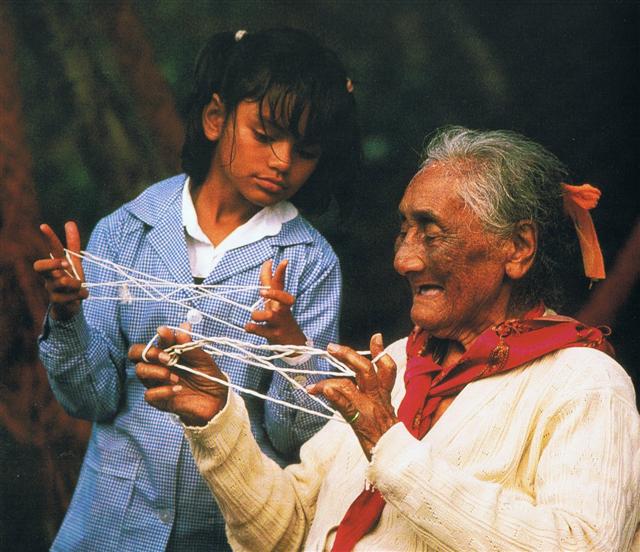
The string hanging down in front in Ca1-4
has only one mata and the other, which could be
expected further down and functioning as heart, is
not there. Possibly it meant there was no star at
March 25 (the Julian equinox), no star in the night sky
close to the Full Moon when the Sun reached Acrux.
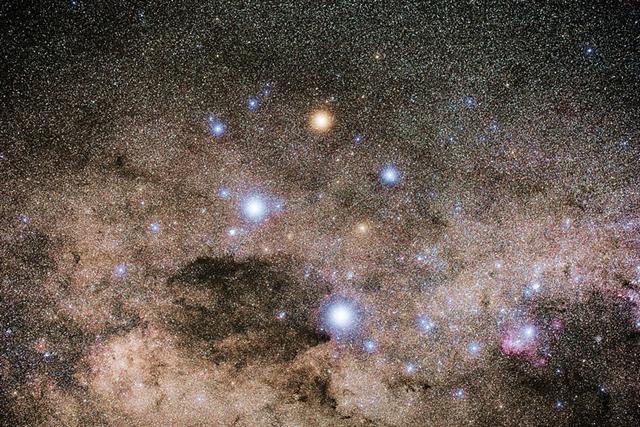
The open mouth at Antares in Ga7-16 probably
indicated this was the place which on Easter Island corresponded
to the position of Aldebaran north of equator, viz. the place
where the Sun would open up (vaha mea) the summer half of
the year. It was as if the Sun had
moved to the Full Moon. It was as if the Sun had 'changed
sex' and become Hotu:
|
SEPTEMBER 20 |
21 (*184) |
EQUINOX |
23 |
24 |
25 (268) |
 |
 |
 |
 |
 |
 |
|
Ga7-14 |
Ga7-15 (184) |
Ga7-16 |
Ga7-17 |
Ga7-18 |
Ga7-19 |
|
Heart-5 (Fox)
σ SCORPII
(247.0),
HEJIAN
= γ Herculis (247.2), ψ Ophiuchi (247.7) |
ρ Ophiuchi (248.1),
KAJAM (Club) = ω
Herculis (248.3), χ Ophiuchi (248.5), SHE LOW (Market Tower) = υ Ophiuchi, Tr. Austr. (248.7), ζ Tr.
Austr. (248.8) |
Al Kalb-16
/
Jyeshtha-18 /
ANA-MUA-1 (Entrance pillar)
ANTARES = α Scorpii
(249.1),
MARFIK (Elbow)
= λ Ophiuchi, φ Ophiuchi (249.5), ω Ophiuchi
(249.8) |
γ Apodis (250.1), σ Herculis (250.3), θ Tr.
Austr. (250.6), τ Scorpii (250.7) |
HAN
= ζ Ophiuchi (251.0) |
ζ Herculis, η Tr. Austr. (252.1), η
Herculis, β Apodis (252.5) |
|
November 23 (327) |
24 |
25 |
26 (*250) |
27 |
28 |
|
°November 19 |
20 (324) |
21 |
22 (*246) |
23 |
24 |
|
'October 27 (300) |
28 |
29 (*222) |
30 |
31 |
'November 1 |
|
"October 13 |
14 |
Tagaroa Uri 15 |
16 |
17 (290) |
18 |
|
NAKSHATRA DATES: |
|
MARCH 22 |
23 |
24 (*368) |
EQUINOX |
26 (85) |
27 |
|
Net-19 (´Crow)
AIN (Eye) = ε
Tauri, θ¹
Tauri, θ² Tauri (65.7) |
no star listed
(66) |
no star listed
(67) |
Rohini-4 /
Pidnu-sha-Shame-4 (Furrow of Heaven) /
ANA-MURI-2 (Rear pillar - at the foot of
which was the place for tattooing)
ALDEBARAN = α Tauri
(68.2), THEEMIN
= υ² Eridani (68.5) |
no star listed
(69) |
no star listed
(70) |
|
May 25 (*65) |
26 |
27 (*432) |
28 |
29 |
30 (150) |
|
°May 21 |
22 |
23 (*428) |
24 |
25 |
26 (146) |
|
'April 28 (*403) |
29 |
30 (*40) |
'May 1 |
2 |
3 (123) |
|
"April 14 (104) |
15 |
16 (*26) |
17 (*392) |
18 (473) |
19 |
 |
 |
 |
 |
 |
 |
|
Ga1-1 |
Ga1-2 |
Ga1-3 |
Ga1-4 |
Ga1-5 |
Ga1-6 |
Instead of a plumb line hanging down at
left (Ga1-2) - for use in the night - there is in
Ga7-15 exhibited a rising string with 6 black 'berries',
probably alluding to Tau-ono in the day before
the Foundation Stone. *249 (Antares) - *55 (Tau-ono)
= 192 (= 6 * 32). There were 6 seated Mayan gods who
created order by placing it in Black-Is-Its-Center.
...
Rehua
has been variously identified with Jupiter by Tregear,
with Sirius by Stowell, and with Antares by Best, and
there can be no doubt that the name was applied to
different objects in various sections of New Zealand.
An old
native declared: 'Rehua is a star, a bird with
two wings; one wing is broken. Under the unbroken wing
is Te Waa-o-Tamarereti (the Canoe of
Tamarereti is the Tail of Scorpius in this
instance). When Rehua mates with his wife
Pekehawani (a star close to Antares) the ocean is
windless and motionless.' Antares, visible in the
morning sky of December-January, came to stand for
summer heat; hence the saying, 'Rehua cooks
(ripens) all fruit'.
The
generally accepted version of the Rehua myth,
according to Best, is that Rehua had two wives,
the stars on either side of Antares. One was
Ruhi-te-rangi or Pekehawani, the
personification of summer languor (ruhi), the
other Whaka-onge-kai, She-who-makes-food-scarce
before the new crops can be harvested
...
On the other hand, from the Mayan perspective
(north of the equator) Aldebaran was like Zotz with an
'open mouth' (vaha mea) in contrast to the closed mouth
of Moan:
 |
 |
 |
 |
|
1
Pop (20) |
2
Uo |
3
Zip |
4
Zotz
(80) |
 |
 |
 |
 |
|
5
Tzek
(100) |
6
Xul |
7
Yaxkin |
8
Mol
(160) |
|
RAIN: |
 |
 |
 |
 |
|
9
Ch'en (180) |
10
Yax |
11
Sac |
12
Ceh
(240) |
 |
 |
200 |
 |
|
13
Mac
(260) |
14
Kankin |
15
Moan
(300) |
|
BREAK (paxih) |
 |
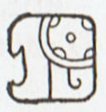 |
 |
 |
|
16
Pax (320) |
17
Kayab |
18 Cumhu |
19
Vayeb (365) |
Although Moan (Muan)
apparently meant an owl, there seems to be a mystery here:
... The sixth
bird of Madrid is an owl, identified by Seler as
the muan bird ...
However, the Moan creature
in my table above was identified as a falcon.
... Six glyphs at least
are clearly pictographic in base:
Pop,
mat; Zotz,
bat; Xul,
?; Kankin,
skeleton ribs;
Moan,
falcon;
Kayab,
turtle ...
To make sense of this
it seems necessary to see Moan
above as the place where the Morning Sun Falcon (Horus) ended
his rule and Zotz as
the place where the otherwise silent (for our ears) Bat would be
calling out like a cock. However, it
seems more reasonable to use the nakshatra method - when
the Sun was absent the Falcon would be
seen close to the Full Moon in the month of the Owl (Moan).
And when the Bat was at the Full Moon it was in the month of the Falcon
(Zotz).
|
HELICAL VIEW |
|
NAKSHATRA VIEW |
|
Morning Falcon |
 |
Month of the Owl
(Moan) |
|
Evening Owl |
 |
Month of the Falcon
(Zotz) |
The Mayas had time running from right to
left and these birds are looking ahead. The mouth of the
owl should therefore correspond to our sign of
increasing in front (<).
Consequently, we can from the overview
below guess the 'Owl' should
come at the beginning (in the east), followed by the
'Crow' in the south, and then the Quetzal in the west,
with the Macaw at the end (in the north):
.jpg)
... The third
bird in Madrid is identified as a king vulture by
Tozzer and Allen (1910) and as a crow by Villacorta
(Villacorta and Villacorta 1930). Seler (1909, IV, 556)
has also identified this bird as a vulture.
However, the probable identifying glyph looks like
yax. Quiche raxon (from *yax-) is
'blue dove', or a gray bird with blue wings.
The fourth bird is very interesting, as the glyger which
should correspond to its name is identical with that of
the dog ... The bird is identified as an owl by Seeler
(1902-1923, IV, 612) and as a 'Yucatan screech owl or
Moan-bird' by Tozzer and Allen (1910). However, the
muan bird is found as the eighth bird of this
series, and this bird lacks the typical spotted tail of
the muan bird. Villacorta calls it a paujil
('guan'), one of the Cracidae
...
We can recognize the eye of Seven Macaw
in the north and in the south there seems to have been a Bull's Eye.
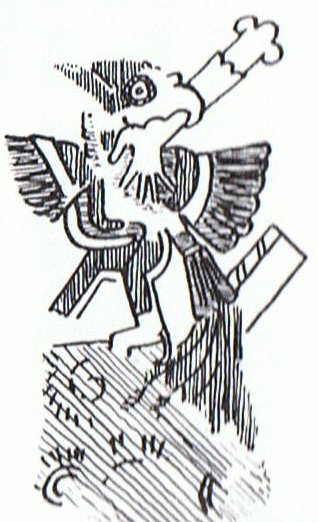
These bird eyes are telling and that of the
Quetzal could possibly correspond to that at the
Pleiades, where the sky roof 'eyebrow' was on its way up:


|






































.jpg)


